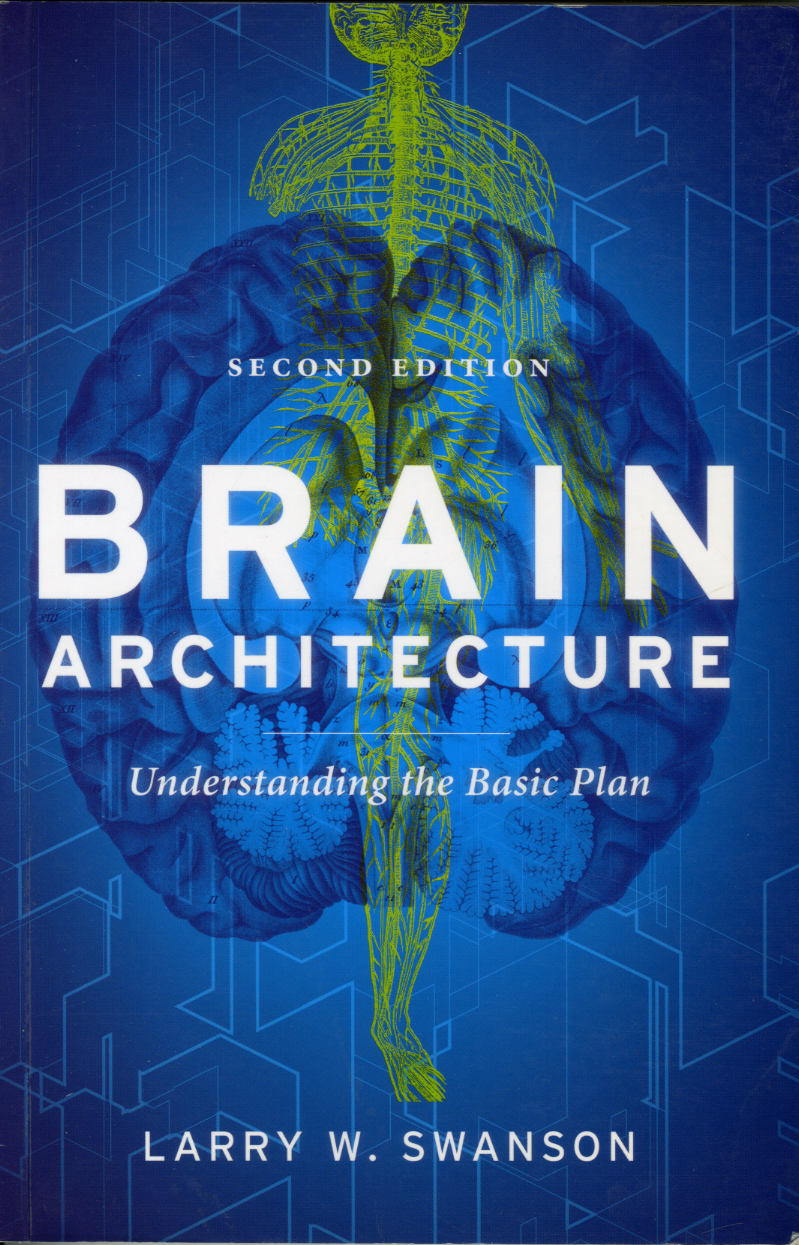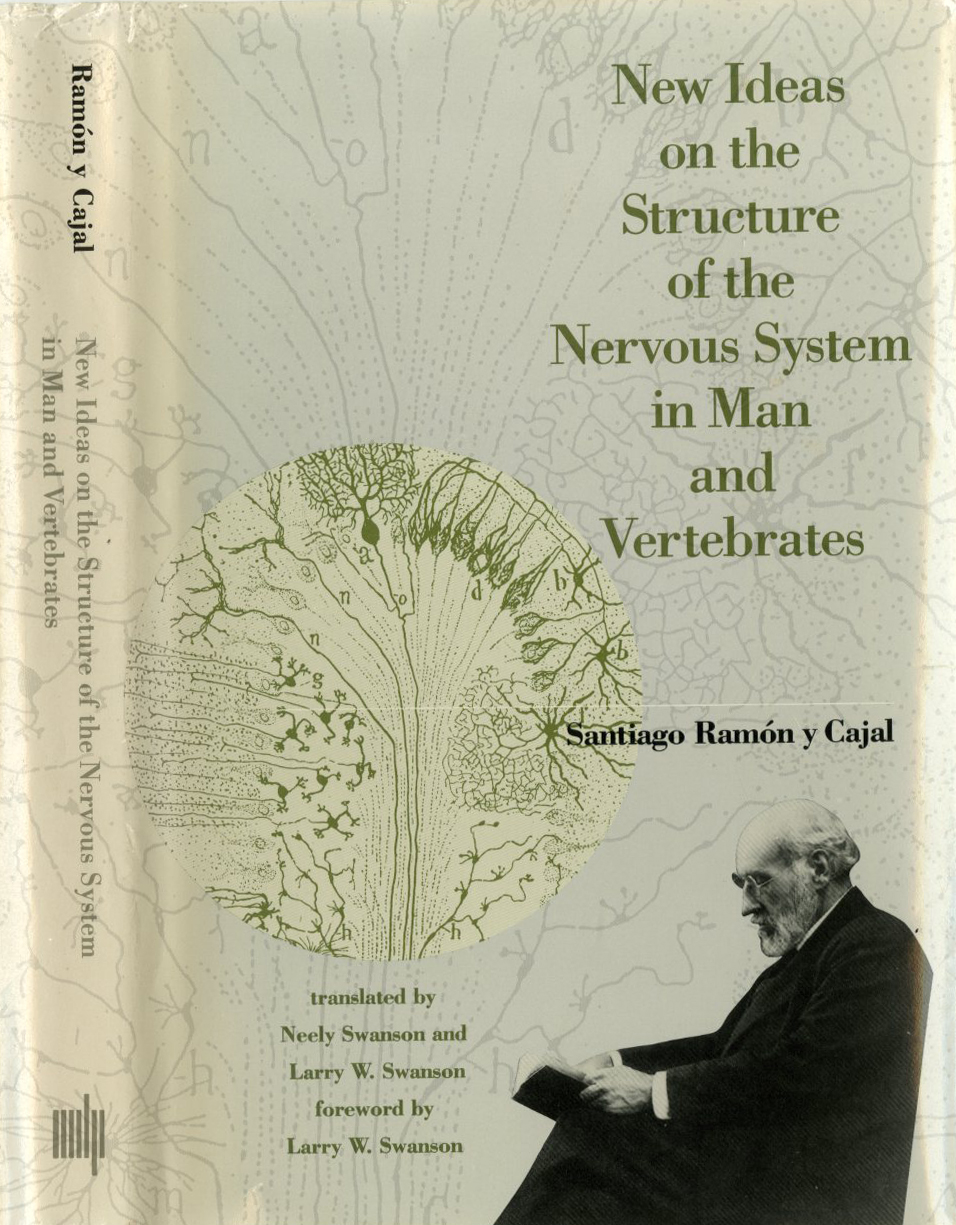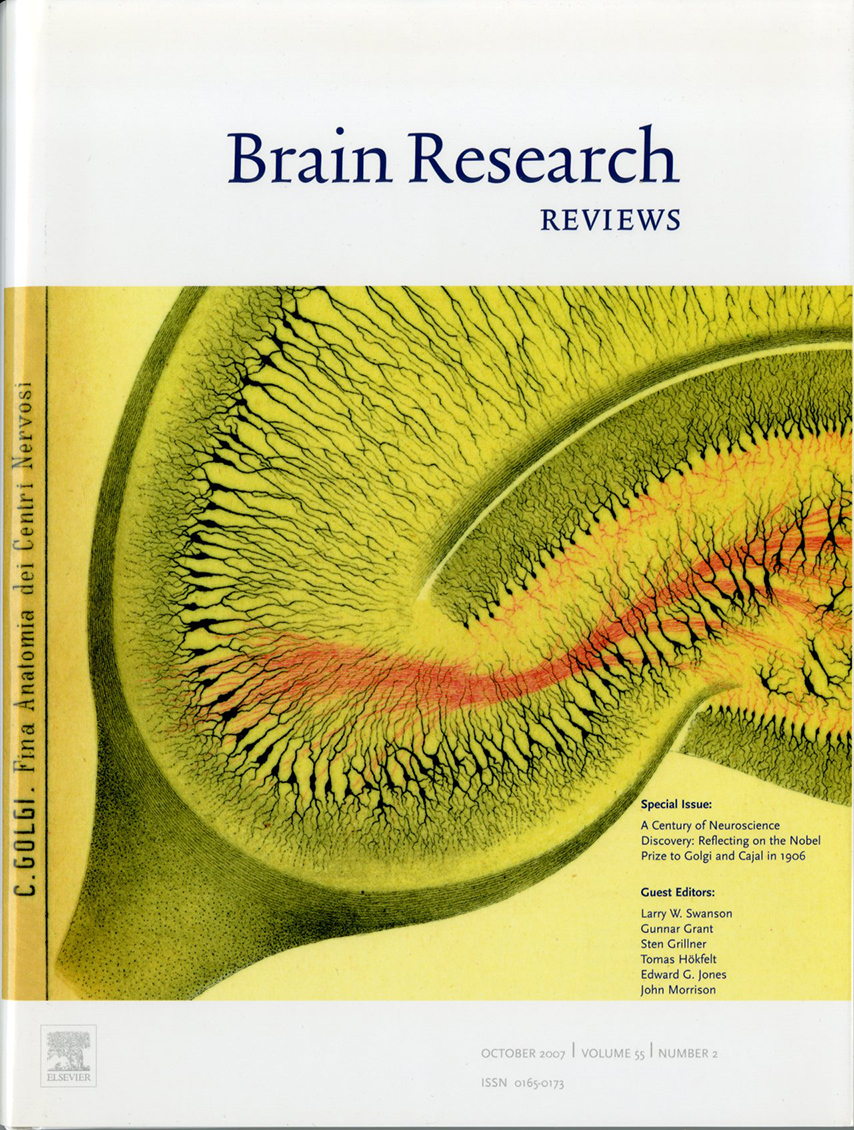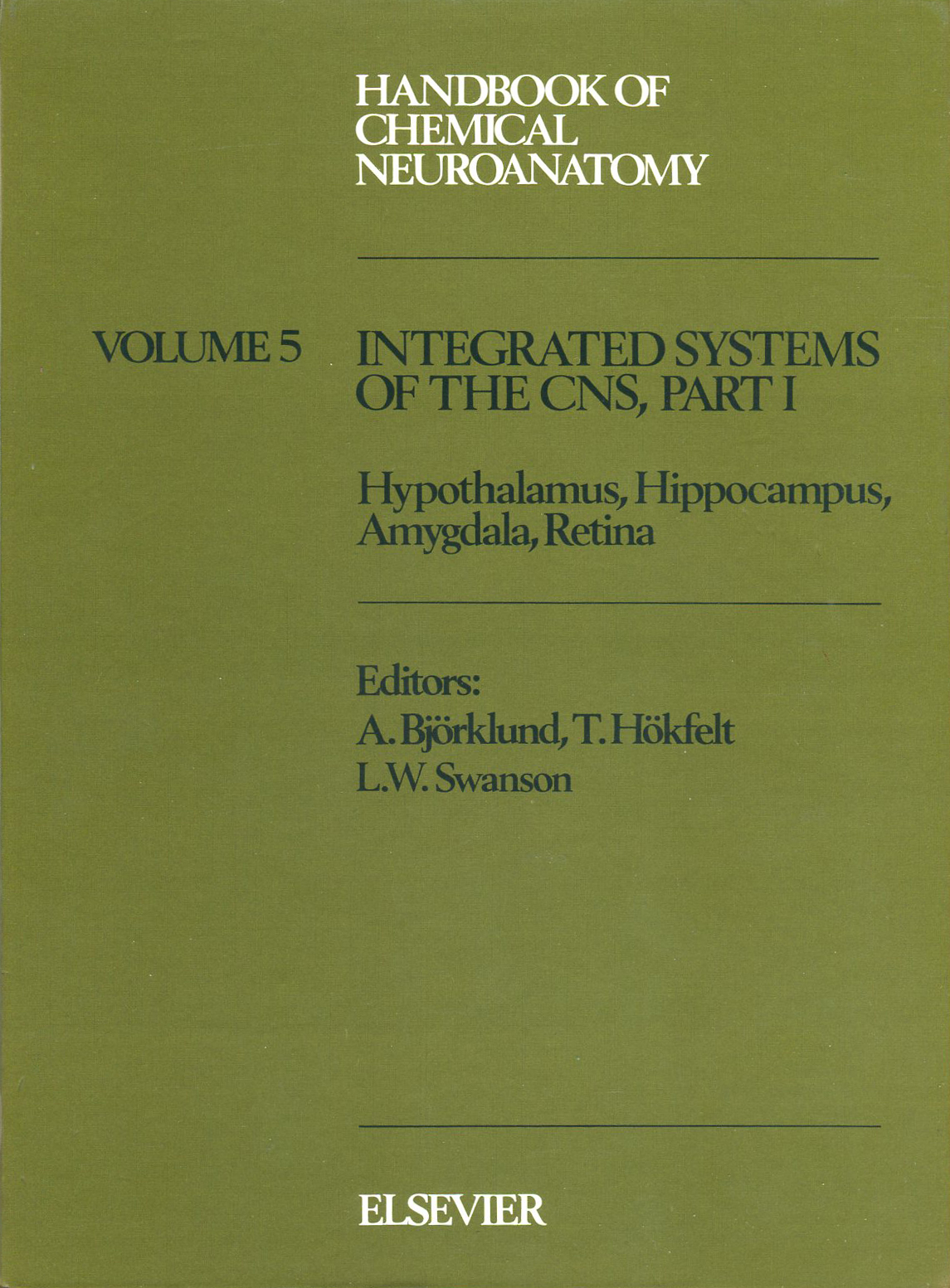A. BRAIN ARCHITECTURE
B. BRAIN ATLASES
C. BRAIN TERMINOLOGY
D. HISTORY
E. EDITED VOLUMES
A. BRAIN ARCHITECTURE
Larry’s always evolving understanding of how nervous system form and function interact to produce thinking, feeling, and behavior is laid out for 2012 in this book published by Oxford University Press,
Brain architecture: understanding the basic plan, 2nd edition
Contents, Brain architecture
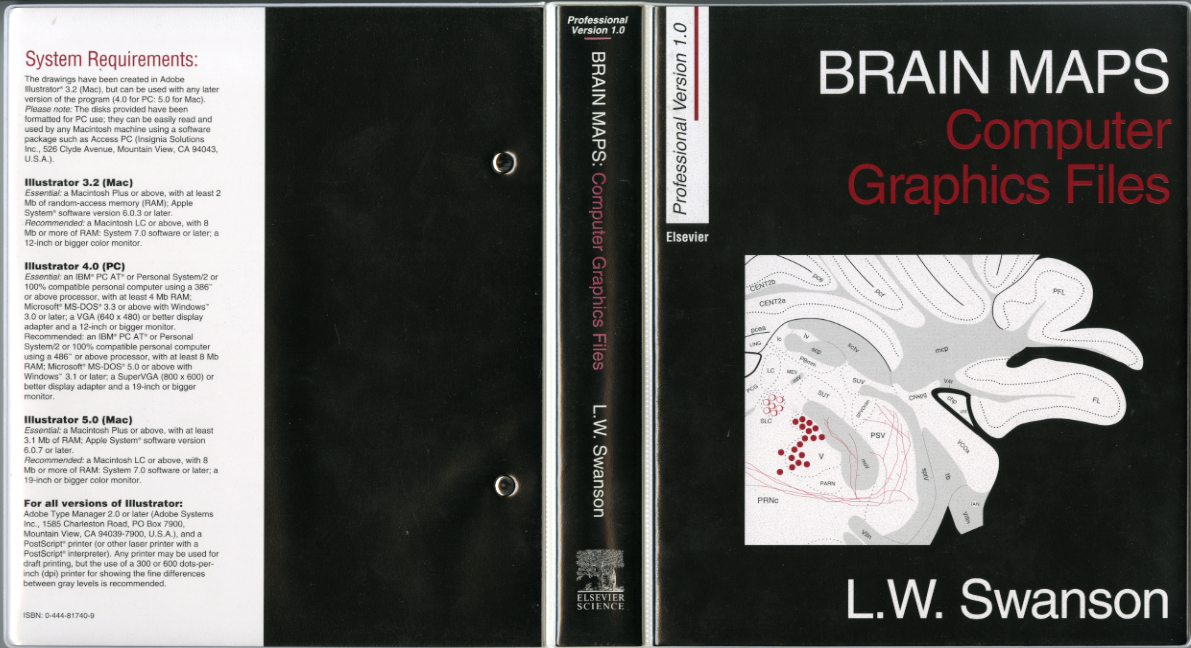 Case for Brain Maps: Computer Graphics Files (1993), with 4 floppy discs
Case for Brain Maps: Computer Graphics Files (1993), with 4 floppy discs
B. BRAIN ATLASES
Larry has also published two complementary atlases of the rat brain, one for the adult and the other for the developing embryo. The first edition of the adult brain atlas was published in 1992 and it had three unique features. First, the maps were drawn in Adobe Illustrator and they were the first computer graphics atlas of the brain published in any species, with the illustration files also available separately (1993; see photo above). Second, a complete and systematic, hierarchically organized set of annotated nomenclature tables was the first of its kind, and became the cornerstone of our future work in neuroinformatics (attracting postdocs like Gully Burns and Mihai Bota), which requires internally consistent and complete parts lists for tables used by database, or really knowledge management system, inference engines. And third, it presented a bilateral flatmap of the rat central nervous system, displaying the gray matter regions outlined in the atlas and presented in the annotated nomenclature tables. These are the books, and accompanying computer graphics files:
(1) Swanson, L.W. (1992) Brain maps: structure of the rat brain (Amsterdam: Elsevier) 240 pp.
(1a) Swanson, L.W. [1993] Brain maps: computer graphics files, professional version 1.0, with 4 floppy discs (Amsterdam: Elsevier).
(2) Swanson, L.W. (1998) Brain maps: structure of the rat brain. A laboratory guide with printed and electronic templates for data, models and schematics , 2nd revised edition (Amsterdam: Elsevier) 268 pp., with double CD-ROM, Brain maps: labeling toolkit & graphics files, including Computer graphics files 2.0, with Interactive brain maps 2.0 (the instruction booklet is dated 1998/1999).
(3) Swanson, L.W. (2004) Brain maps: structure of the rat brain. A laboratory guide with printed and electronic templates for data, models and schematics, 3rd revised edition (Amsterdam: Elsevier) 215 pp., with CD-ROM, Brain maps: computer graphics files 3.0 and including Interactive brain maps 3.0. Download open access files from the third edition.
(4) Swanson, L.W. (2018) Brain maps 4.0-Structure of the rat brain: an open access atlas with global nervous system nomenclature ontology and flatmaps. Journal of Comparative Neurology. doi: 10.1002/cne.24381.
Alvarez-Bolado, G. & Swanson, L.W. (1996) Developmental brain maps: structure of the embryonic rat brain (Amsterdam: Elsevier) 154 pp. Download open access files.
These atlases were complemented by a photographic atlas of the rat brain with Larry Kruger and Sam Saporta:
Kruger, L., Saporta, S., & Swanson, L.W. (1995) Photographic atlas of the rat brain: the cell and fiber architecture illustrated in three planes with stereotaxic coordinates (New York: Cambridge University Press) 299 pp.
C. BRAIN TERMINOLOGY
Because of the importance in science of clearly defined and systematic terminology, Larry also undertook in the late 1990s a re-examination of terminology used to describe the human nervous system. The results were published in 2014, and lay out a complete system for gray matter regions and white matter tracts in both the central and the peripheral nervous system. Current work is aimed at forming a bridge between nervous system terminology in humans and rodents, with a long-term goal of creating a terminology that can be applied to all mammals for use in neuroinformatics platforms. This would greatly facilitate bridging the gap between experimental systems neuroscience research in animals, and the more translational research now being carried out in humans, especially with brain imaging in living subjects. This is the recent book:
Swanson, L.W. (2015) Neuroanatomical terminology: a lexicon of classical origins and historical foundations (New York: Oxford University Press) 1054 pp.
D. HISTORY
An historical perspective is always useful in any field. It is universally recognized that the Spanish Nobel-prize winning scientist, Santiago Ramón y Cajal (1852-1934), was the leading founder of modern neuroscience in the late 19th century. Because of his great and lasting contributions to the field, Larry and his wife Neely have translated three of his books. The most important is his comprehensive two-volume masterpiece, Histology of the nervous system in man and vertebrates, with the first edition in Spanish (1899-1904), and the revised and expanded second edition in French (1909-1911). We translated the definitive French edition:
Swanson, N. & Swanson, L.W., translators (1995) Santiago Ramón y Cajal: histology of the nervous system in man and vertebrates, volumes I & II (New York: Oxford University Press) 805 & 806 pp.
Before translating the huge volumes, however, we took on the seminal precursor, which was originally published in Spanish (1892), German (1893), and then French (1894). Our translation of the French edition of this minor classic came out as:
Swanson, N. & Swanson, L.W., translators (1990) Santiago Ramón y Cajal: new ideas on the structure of the nervous system in man and vertebrates (Cambridge MA: MIT Press) 201 pp.
Finally, on a lighter note, Larry and Neely translated afresh Cajal’s delightful, insightful, and immensely helpful even today, advice to young people considering a career in research:
Swanson, N. & Swanson, L.W., translators (1998) Santiago Ramón y Cajal: advice to a young investigator (Cambridge MA: MIT Press) 150 pp.
E. EDITED VOLUMES
Larry has also had the pleasure of editing with others a number of books on a variety of neuroscience topics:
Swanson, L.W., Teyler, T.J., & Thompson, R.F. (1982) Mechanisms and functional implications of hippocampal LTP, NRP Bulletin 20:613-769 (Cambridge MA: MIT Press).
Björklund, A., Hökfelt , T., & Swanson, L.W., editors (1987) Handbook of chemical neuroanatomy, Vol. 5, Integrated systems of the CNS, Part I (Hypothalamus, hippocampus, amygdala, retina) (Amsterdam: Elsevier) 459 pp. (2) Björklund, A., Hökfelt T., & Swanson, L.W., editors (1989) Handbook of chemical neuroanatomy, Vol. 7, Integrated systems of the CNS, Part II (Central visual, auditory, somatosensory, gustatory) (Amsterdam: Elsevier) 424 pp. (3) Swanson, L.W., Björklund A., & Hökfelt, T., editors (1996) Handbook of chemical neuroanatomy, Vol. 12, Integrated systems of the CNS, Part III (Cerebellum, basal ganglia, olfactory system) (Amsterdam: Elsevier) 584 pp.
Swanson, L.W., Grant, G., Grillner, S., Hökfelt, T., Jones, E.G., & Morrison, J., guest editors (2007) A century of neuroscience discovery: reflecting on the Nobel Prize to Golgi and Cajal in 1906. Special issue of Brain Research Reviews 55:191-498.
Ribak, C.E., Aramburo, C., Jones, E.G., Larriva Sahd, J.A., & Swanson, L.W., editors (2009) From development to degeneration and regeneration of the nervous system (New York, Oxford University Press) 343 pp.
Bentivoglio, M., Jones, E.G., Mazzarello, P., Ribak, C.E., Shepherd, G.M., & Swanson, L.W., guest editors (2011) Camillo Golgi and modern neuroscience. Special issue of Brain Research Reviews 66:1-269.
Baudry, M. & Swanson, L.W., guest editors (2011) R.F. Thompson: a bridge between 20th and 21st century neuroscience. Special issue of Neurobiology of Learning and Memory 95:103-220.

